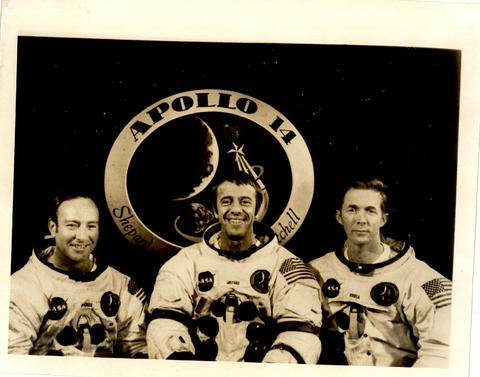
Identity area
Reference code
Title
Date(s)
- 0000-00-00 (Creation)
Level of description
Extent and medium
Context area
Name of creator
Biographical history
Archival history
Immediate source of acquisition or transfer
Content and structure area
Scope and content
The moon landing flight for Apollo 14 is scheduled for launch on January 31, 1971, from Cape Kennedy, Florida, manned by astronauts Alan B. Shepard, Jr., commander; Edgar D. Mitchell, lunar module pilot; and Stuart A. Roosa, command module pilot. The target for their lunar landing is in the Fra Mauro region of the moon about 100 miles (160 kilometers) north of an area where 25 moonquakes have been detected in the past nine months by instruments left on the moon by the Apollo 12 astronauts. Supplementing the work of their colleagues of Apollo 11 and Apollo 12, the Apollo 14 crew will deploy scientific instruments to gather and relay back to earth additional information about the surface and other physical features of the moon. The collection of rock specimens in this area is of utmost importance since it is believed that some of the oldest rocks in the solar system exist in the Fra Mauro region. On this third manned lunar landing, the astronauts hope to gain data on the shape, structure and thickness of the moon's outer crust by setting off a series of small explosions whose shock waves penetrating deep into the moon and bouncing back to the surface, will be picked up by recording devices. The character of the returned signal may provide clues to the presence or absence of water on the moon. This information might also indicate whether the moon ever had a hot molten core. While astronauts Shepard and Mitchell are conducting these and other experiments on the moon's surface, astronaut Roosa will orbit the moon alone 70 miles (112 kilometers) above, photographing candidate sites for future landings and measuring lunar mountains and craters. The astronauts will be wearing a newly designed helmet with a better visor for viewing and sun protection and a metal plate to protect their heads as they leave and enter the spacecraft.
Apollo 14 commander Alan B. Shepard, Jr., center: command pilot Stuart A. Roosa, left: and lunar module pilot Edgar D. Mitchell, right, are shown with their Apollo 14 emblem. Commander Shepard made the first United States manned space flight on May 5, 1961. He rocketed 116 miles (185.6 kilometers) into space from Cape Canaveral (now Cape Kennedy), Florida, landing 15 minutes later 302 miles (483.2 kilometers) out in the Atlantic ocean. Shepard manually operated the controls to pilot his spacecraft during the flight.
Appraisal, destruction and scheduling
Accruals
System of arrangement
Conditions of access and use area
Conditions governing access
Conditions governing reproduction
Language of material
Script of material
Language and script notes
Physical characteristics and technical requirements
Finding aids
Allied materials area
Existence and location of originals
Existence and location of copies
Related units of description
Notes area
Access points
Subject access points
Place access points
Name access points
- The Times of Ceylon Press (Creator)
